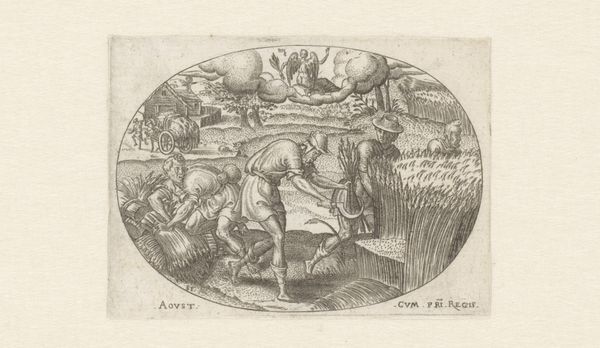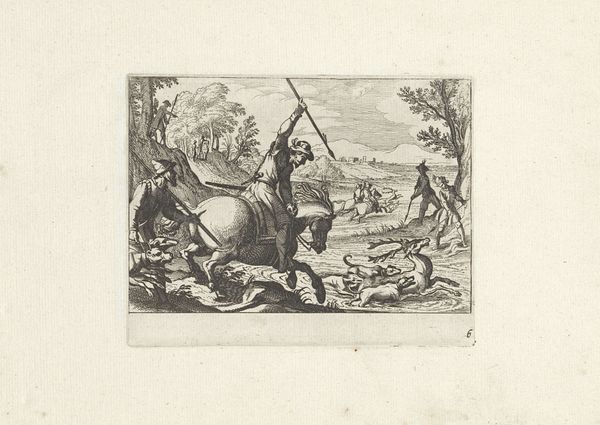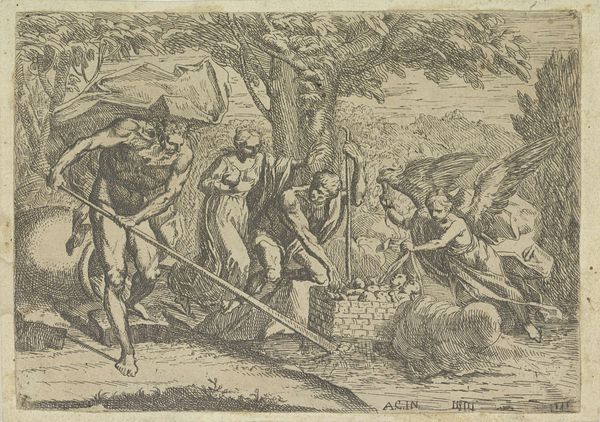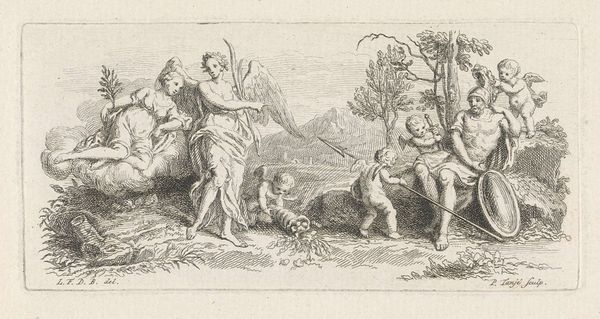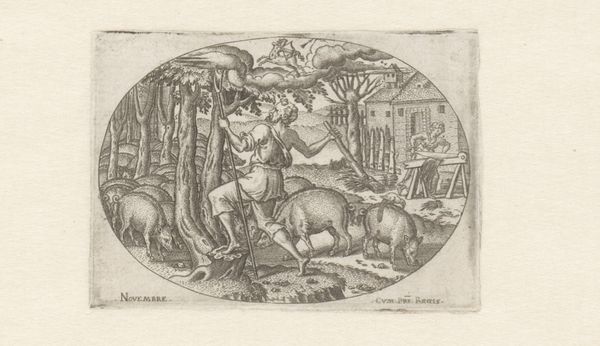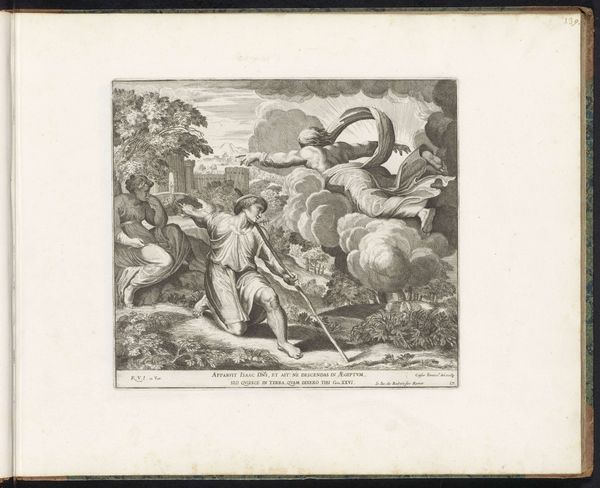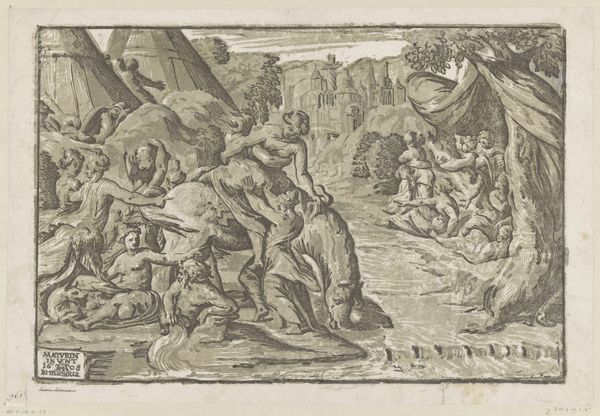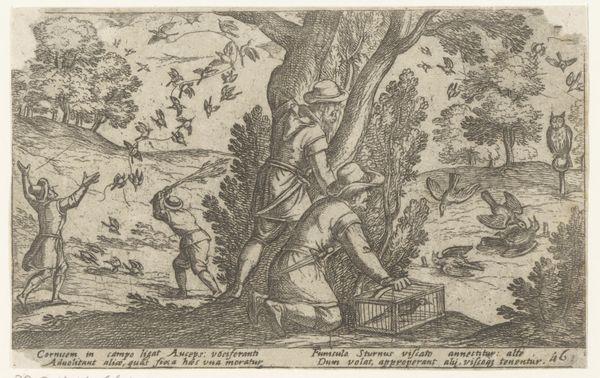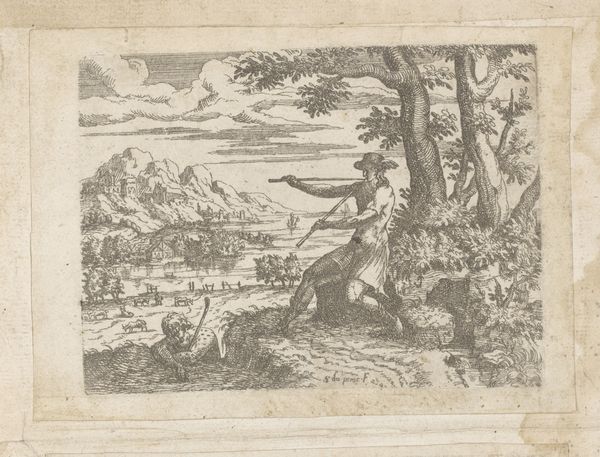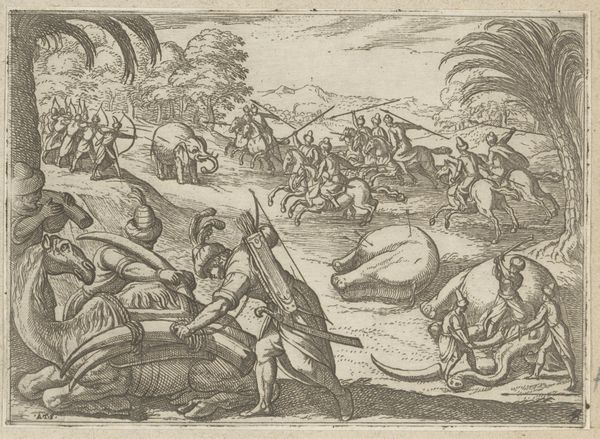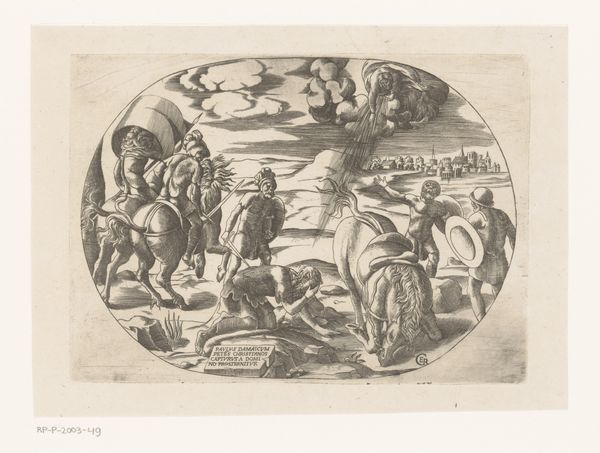
print, engraving
# print
#
old engraving style
#
landscape
#
mannerism
#
figuration
#
genre-painting
#
engraving
Dimensions: height 56 mm, width 78 mm
Copyright: Rijks Museum: Open Domain
Etienne Delaune created this minuscule engraving, "Juli," around 1570, now held in the Rijksmuseum. Its circular composition, packed with fine lines, constructs a panoramic vista of rural activity, immediately creating a sense of industriousness. The engraving meticulously balances foreground and background, employing a structural division that emphasizes a semiotic contrast between labor and leisure. Observe how the foreground teems with active figures harvesting, their movements rendered with short, repetitive strokes to create a sense of dynamism. In contrast, the background unfolds into a serene landscape, complete with a horse-drawn cart and a distant town, elements that introduce a contemplative counterpoint. Delaune destabilizes traditional landscape art by embedding social commentary within the picturesque, challenging viewers to consider the socio-economic underpinnings of pastoral life. Note how the circular format isn’t merely decorative; it acts as a frame that concentrates our view, compelling us to reconcile the diverse visual elements within a unified field. This formal strategy underscores the interconnectedness of labor, nature, and society, rendering "Juli" a complex statement about Renaissance-era values.
Comments
No comments
Be the first to comment and join the conversation on the ultimate creative platform.
